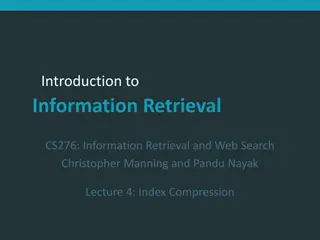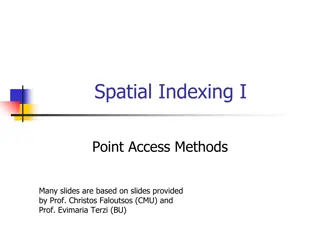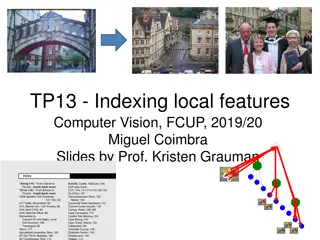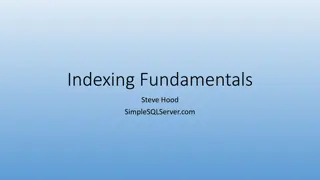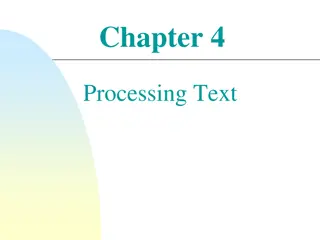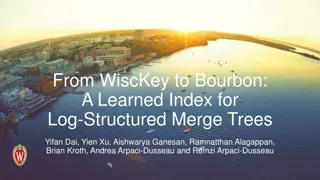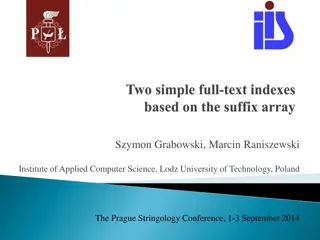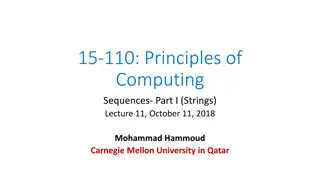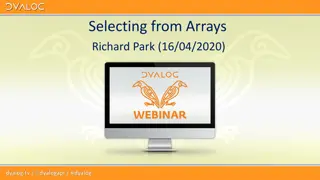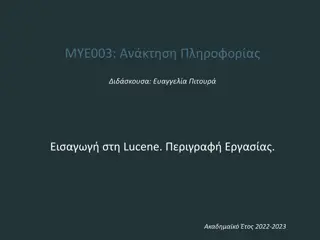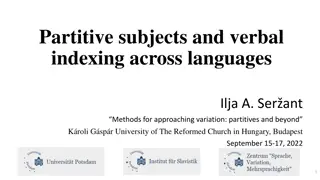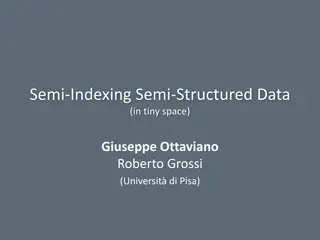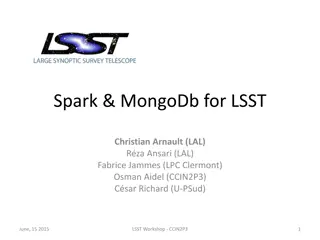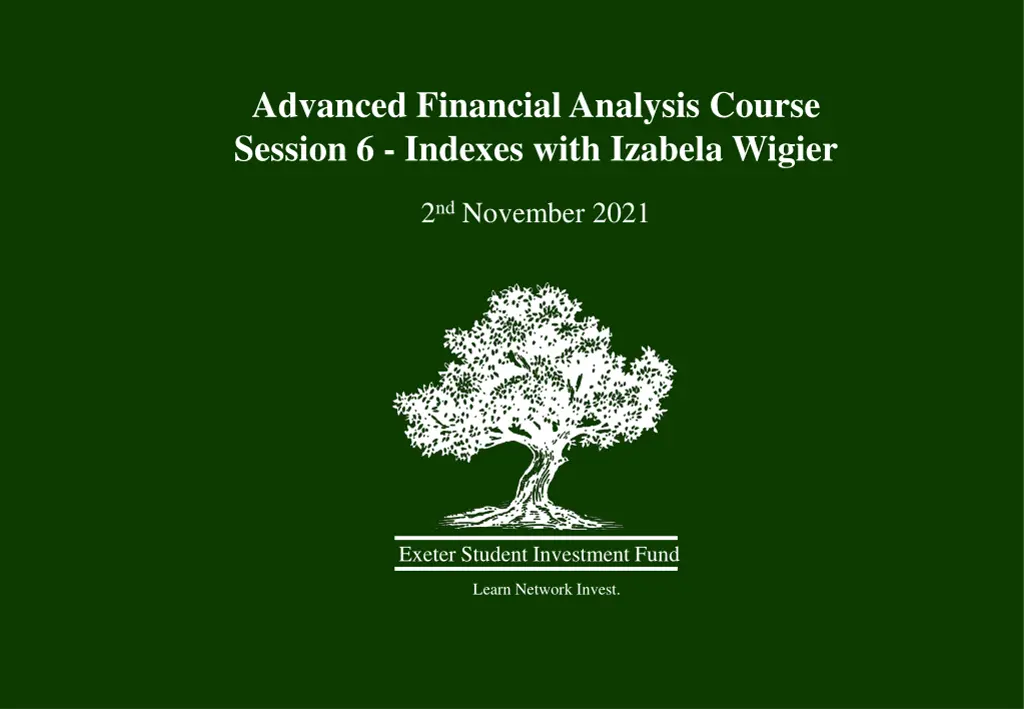
Understanding Indexes in Financial Analysis: Growth, Construction, and Uses
Explore the world of indexes in financial analysis, from their history and growth to their construction, weighting methods, and uses. Discover the differences between price and total return indexes, and learn about ETFs and mutual funds. Gain insights into the transparent and investable criteria of indexes, and understand how they are utilized in measuring market performance.
Download Presentation

Please find below an Image/Link to download the presentation.
The content on the website is provided AS IS for your information and personal use only. It may not be sold, licensed, or shared on other websites without obtaining consent from the author. If you encounter any issues during the download, it is possible that the publisher has removed the file from their server.
You are allowed to download the files provided on this website for personal or commercial use, subject to the condition that they are used lawfully. All files are the property of their respective owners.
The content on the website is provided AS IS for your information and personal use only. It may not be sold, licensed, or shared on other websites without obtaining consent from the author.
E N D
Presentation Transcript
Advanced Financial Analysis Course Session 6 - Indexes with Izabela Wigier 2nd November 2021 Exeter Student Investment Fund Learn Network Invest.
AGENDA Key definitions - Exchange vs Index Brief history and growth of indexing Index Construction Weighting Price index vs total return index Index Uses Brief overview of ETFs/ mutual funds
EXCHANGE VS INDEX EXCHANGE The marketplace where securities, commodities, derivatives and other financial instruments are traded INDEX A way of measuring the performance of the market or a section of the market Example: FTSE100 measures the performance of 100 largest companies listed on the London Stock Exchange EXCHANGE TRADED FUND (ETF) Type of index fund, which is traded on global exchanges
BRIEF HISTORY AND GROWTH OF INDEXING Today - There are now 70x more stock market indices than listed stocks in the world - Over 7,000 ETFs traded globally - Over $15tr index assets under management globally across index funds and ETFs Early 2000s First fixed income ETFs 1990s First ETFs S&P 500 SPDR in 1993 1976 First public index mutual fund Vanguard 500 ($11mn) 1960s First theoretical model of an index fund emerges
GROWTH OF INDEXING Assets under management Index fund universe by asset class
INDEX CRITERIA RULES-BASED TRANSPARENT INVESTABLE Consistent treatment Objective Predictable Rules are public and clearly stated Understandable Investors can replicate the return and risk performance of the index
INDEX CONSTRUCTION Target market Corporate actions treatment Security selection INDEX Rebalancing frequency Weighting
WEIGHTING Weighting each stock by its total market capitalisation as a % of total capitalisation of all the stocks in the index Market capitalisation Market capitalisation adjusted for outstanding shares that are not closely held and therefore available for trading by market participants Free-float market cap Weighting each stock by its price This can be achieved with a portfolio that holds an equal number of shares of each index stock Price-weighted Investing equal amounts in each portfolio stock; Reduces concentration risk; reduces changes in sector exposures as market prices change Equal-weighted Weighting index stocks by their proportions of the total index value of a fundamental factor such as sales, income, dividends Fundamental Weights are determined by running an optimisation against certain criteria, e.g. maximising factor exposure or ESG scores Alternative
CONSTRUCTION EXAMPLE Price ( ) Shares outstanding Free Float Float-adj Market Cap ( ) 400,000 86,400 504,000 155,400 1,145,800 Weight in Mkt Cap index 34.9% 7.5% 44.0% 13.6% 100% Weight in Price index 11.6% 7.0% 32.5% 48.9% 100% Stock A Stock B Stock C Stock D TOTAL 5 3 14 21 43 100,000 120,000 36,000 74,000 80% 24% 100% 10% Float-adjusted market capitalization = Price x Shares outstanding x Free Float % Security weight in Mkt Cap index = Security free-float market cap / Total free-float mkt cap Security weight in Price index = Price / Sum of prices
US EQUITY INDEX COMPARISON S&P 500 Dow Jones Industrial Average Free-float market cap Price-weighted 500 stocks 30 stocks Sector weights based on market cap Typically one stock from each sector
PRICE RETURN VS TOTAL RETURN INDICES PRICE RETURN TOTAL RETURN Includes only the movements in price of the constituents Includes the return from both income and price movements Typically the headline figure referred to for major indices
INDEX USES Index investing Investing in a fund which seeks to track the performance of the index; earn the return of the market Used for ETFs and index mutual funds Benchmark of active investing Index can be the guidepost an active manager will be seeking to outperform Reflection of investor confidence Financial modelling Indices can be used as proxy measures of market return and risk (beta and risk adjusted returns) for financial modelling (pricing models, forecasts etc). Derivative contracts Indices are the underlying used for derivatives such as futures and options
BRIEF VIEW OF ETFs AND MUTUAL FUNDS INDEX MUTUAL FUNDS ETFs - Can be bought and sold on exchange - Can be bought and sold on fund platforms but don t trade on exchanges Pooled - ETF secondary market allows transactions between investors without creating or redeeming shares investment funds that aim to track the performance of a specific index by investing in a basket of assets - Investors are effectively transacting with the manager of the fund in the fund Generally have low fees - Trading takes place once a day -Trading takes place throughout the day - Transparency of holdings




